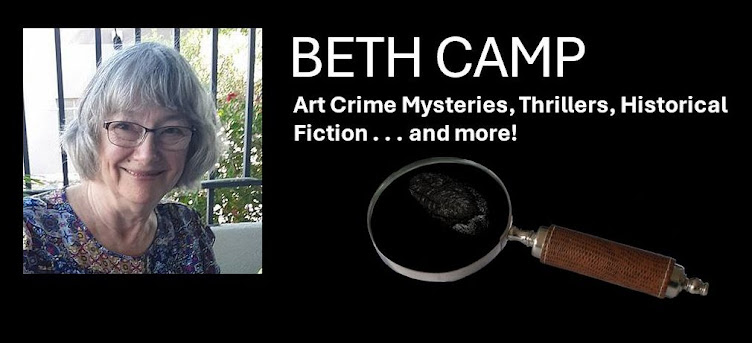The back story: I've spilled the beans here in my blog that for my current wip, Rivers of Stone, I had hit a revision wall with the story not jelling at that crucial ending and some very useful but challenging feedback from beta readers. I wanted to be finished, but the story was not done with me.
What my story needed was a major restructuring of one main character and a rethinking of how she interacted with the other characters (and how they interacted with her). That was nearly enough for me to want to put the whole story into a file and forget it. After a few months of waffling and struggling with the 'how' to move forward, my DH came to the rescue.
You should hear us talk. Allen thinks in logical structures and works through ideas the same way. When he writes, he spends a lot of time just thinking and then very slowly writes his story one sentence at a time. I tend to think, debate, and write intuitively, leaping in a nonlinear fashion through my projects.
Allen explained that with literary fiction, the writer works on different levels, sometimes consciously and sometimes unconsciously. As we work deeper into any story, those levels become more difficult to change.
What does Snow White have to do with deep revision? So let's use Snow White to think about four levels of fiction commonly found in literary fiction.
STORY involves the surface elements of plot and character that are relatively easy to change. In Snow White, a beautiful and innocent daughter is feared and hated by her father's new wife. Dispatched to the forest to be killed, she wanders alone, is taken in by a band of dwarfs only to fall into a coma after eating a poisoned apple. Snow White is saved for her happy-ever-after by the kiss of a handsome prince.
STYLE is that unique voice (or persona) of the storyteller that infuses the story, its point of view, word choice, and mood. Imagine how many times you've heard the story of Snow White and in how many different 'voices.'
THEME is a universal idea that affects everything in the story. It may be expressed in a few words, and the theme shapes the story and is difficult to change. In Snow White, the theme might be 'true love rescues innocence.'
SYMBOLISM are those compelling images/objects that appear in the story. For some, that compelling image might be the poisoned apple or the handsome prince's kiss.
To begin deep revision, we need to look at these four categories in our stories.
What in the heck is deep revision? The Freelance Editorial Association identifies FOUR categories of revision: Developmental (working at the concept, outline or draft to develop the story); Substantive (improving the overall manuscript by restructuring, reorganizing, and rewriting); Copy editing (reviewing style, format, and grammar -- among other elements -- for consistency); and final Proofreading.
I also found this fascinating checklist by Waverly Fitzgerald on deep revision that listed the kinds of questions a writer could ask.
But, none of these categories of revision seemed to fit what I experienced in revising my draft.
For me, deep revision involves the rethinking of a story and its basic elements -- character, plot, point of view, setting, style, theme, and symbolism. This kind of revision can happen at any point in the writing process (planning, drafting, or revision), and, if you're truly unlucky, during final revision.
So, what does deep revision mean to you? If you write more methodically, these questions about revision may not trouble you. Or, have they? If you write intuitively, what has been your experience with revision?
Tune in later this week for Part 2 -- You'll find exercises we used in the writing workshop to analyze what kinds of revision we might need, how the elements of our story fit together, and how we might tap our unconscious for drafting and revision.
As you pursue your own writing, take a few moments to enjoy the transition from fall to winter:
 |
| Manito Park, October 2017 |

No comments:
Post a Comment